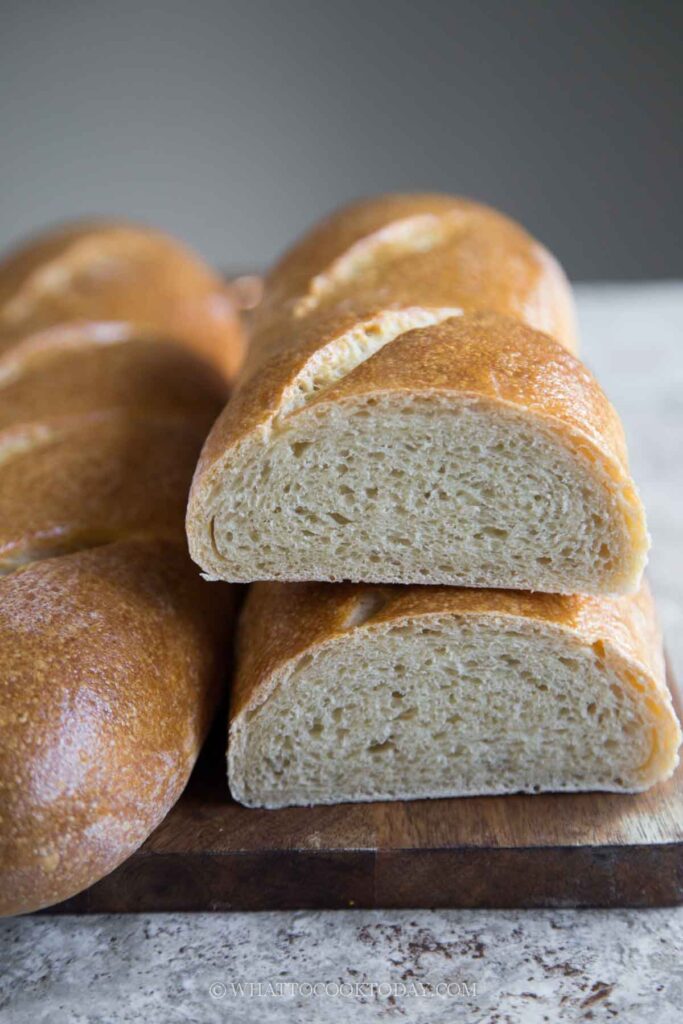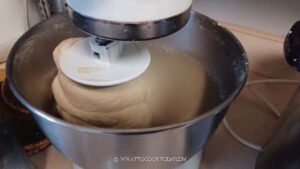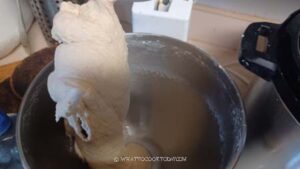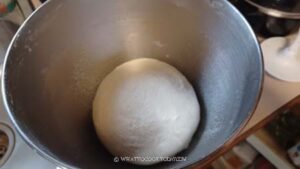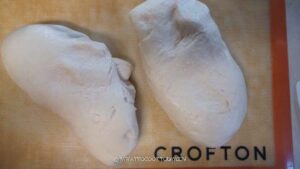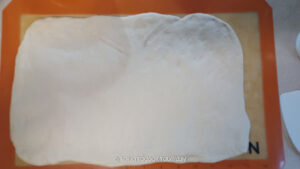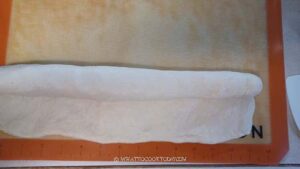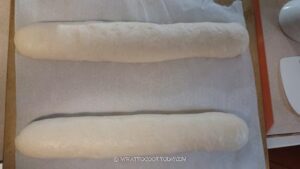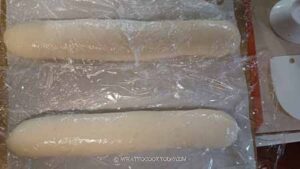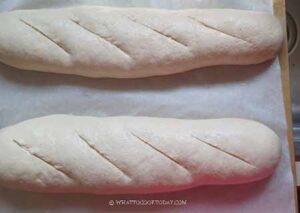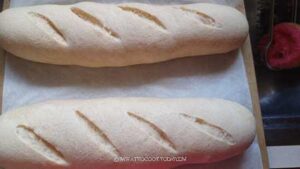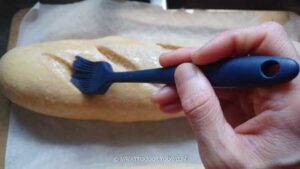This post may contain affiliate links. Please read our disclosure policy.
This soft-crust French bread is tender, flavorful, and easy to make with an overnight rise. Perfect for dipping, sandwiches, garlic bread, pizza, and more.

When you hear “French bread,” chances are you picture a long, crusty baguette with a shatteringly crisp exterior and an airy crumb. That’s the image most of us have — especially in the U.S. But in France, not all breads are hard-crusted! There’s pain de mie, pain viennois, brioche, and many other softer loaves.
What I’m sharing today is my go-to soft-crust French bread recipe, an American-style interpretation that retains the classic French bread shape while offering a tender bite and a softer crust. My kids love it so much that I bake it every week. It’s versatile, stays fresh longer than a traditional baguette, and is perfect for just about any bread situation you can think of. This bread gets so much love in our house!
Why You’ll Like This Recipe
- Soft but still flavorful – This isn’t bland sandwich bread; it has that subtle chew and aroma of French bread, but without the jaw workout.
- Overnight fermentation – The fridge rest allows for flavor development and provides a flexible baking schedule.
- Two big loaves – Bake once, enjoy all week (or freeze one for later).
- Versatile – I use it for antipasti with balsamic vinegar and olive oil, garlic bread, crostini, French bread pizza, sandwiches, croutons — you name it.
- Kid-approved – My kids request this bread every week and so I have to make sure it’s in stock in my freezer
Ingredients and Substitutions
- Bread flour – Provides structure and chew. You can substitute all-purpose flour, though the texture will be slightly softer and less chewy, which is good too.
- Water – Use lukewarm water
- Oil – Neutral oil works well, or olive oil for a richer flavor. I use avocado oil
- Instant yeast – No need to proof; mix directly into the flour. If you use active dry yeast, you need to mix with a bit of warm water and let it ferment for 10 minutes until bubbly before using it
- Sugar – Feeds the yeast and adds a subtle sweetness.
- Salt – Balances the flavor and it’s important to provide structure and control fermentation
- Egg wash – Gives the bread a golden, shiny crust.
Serving Suggestions
- As an appetizer. You can tear the bread and dip it into extra virgin olive oil mixed with balsamic vinegar.
- Slice it thinly to make crostini or bruschetta.
- Use it for garlic bread or cheesy pull-apart bread.
- It makes an excellent base for French bread pizza
- It can be cubed for homemade croutons.
- Of course, it works beautifully as sandwich bread for subs, grilled cheese sandwich, or panini.
Frequently Asked Questions
- Is this bread the same as a baguette?
No, a baguette has a thinner, crispier crust and a drier crumb. This recipe is intentionally softer with a more tender bite. - Can I freeze it?
Yes, slice the bread for convenience, wrap it well, and freeze it for up to 3 months. You can thaw it at room temperature or toast it directly from frozen. - Can I skip the overnight rise?
You can, but the flavor won’t develop as much. If skipping, let the dough proof at room temperature until puffy before baking.

Soft French Bread Recipe
Ingredients
- 640 g bread flour plus more as needed
- 365 g lukewarm water
- 2 Tbsp neutral oil or olive oil for richer flavor
- 2 tsp instant yeast
- 1 Tbsp sugar
- 2 tsp salt
Egg wash:
- 1 egg
- 1 tsp water
Instructions
Make the dough:
- In a mixing bowl, combine bread flour, water, oil, yeast, sugar, and salt. Knead until the dough is soft and elastic, about 6–7 minutes on medium speed.

- It clears the side of the bowl but stick to the bottom of the bowl. The dough should be slightly tacky when you thouch it but the dough shouldn't stick to your fingers.

First rest:
- Shape the dough into a ball, lightly oil a bowl, and place the dough inside. Cover and rest for 30 minutes. The dough may not rise much at this stage.

Shape the loaves:
- Deflate the dough and divide it into two equal portions.

- Flatten each portion into a rectangle about 8–9 inches long and 4–5 inches wide.

- Roll into a tight log, pinch the seam shut

- Place seam-side down on a baking pan lined with parchment paper (both on one large pan or two separate pans). Repeat with the other dough. Make sure each dough has enough room to expand because they will grow in size during fermentation.

- Brush lightly with oil, making sure to brush it evenly and cover with cling wrap. This step is to prevent the dough from drying out in the fridge

Overnight proof:
- Refrigerate for 8–12 hours. The dough will be puffy and airy after fermentation

Prepare to bake:
- The next day, preheat the oven to 425 F/ 220 C (conventional oven). Lower the temperature by 20 F /15 C if using convection oven. Position the rack in the middle or if you are using two pans, position one rack on the upper 3rd and another one on the lower 3rd.
- Let the dough rest at room temperature while the oven preheats. Using a sharp knife or bread lame, make 3–4 quick diagonal slashes on each loaf.

Bake:
- Bake for 10 minutes, then reduce the temperature to 400°F and bake for another 15 minutes. If using two pans, rotate them from top to bottom and front to back when lowering the temperature.
- Remove the pan(s) from the oven after 15 minutes.

- Brush with egg wash

- Bake for an additional 5 minutes, or until golden brown and the internal temperature reaches at least 190°F.

Finish and cool:
- Cool on a wire rack before slicing.

RECOMMEDED TOOLS
*Nutrition facts are just estimates and calculated using online tools*
